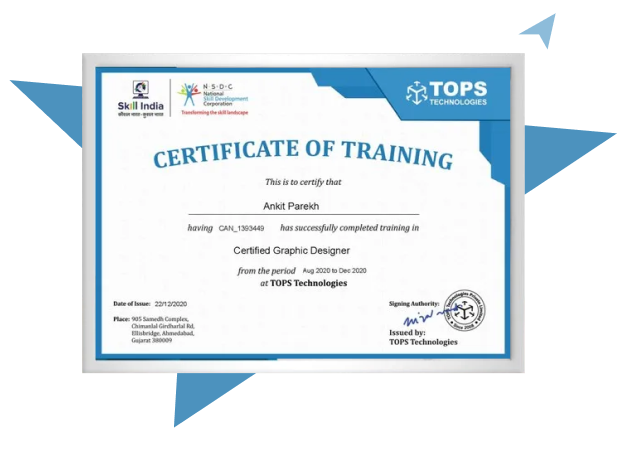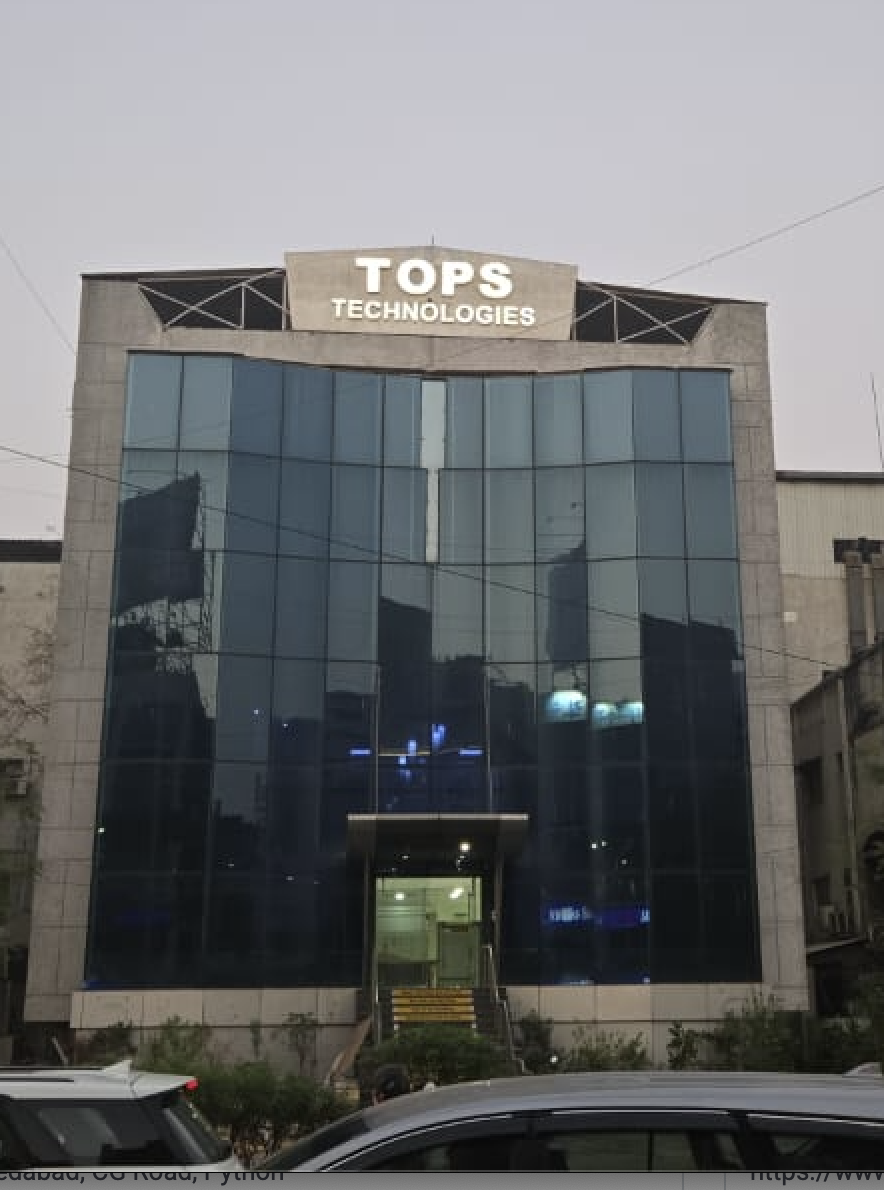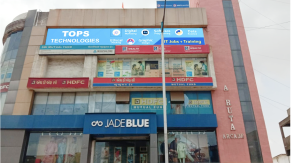Our Facts and Figures
1 Lac+
Student Placed
3000+
Companies TieUp
19+
Offices in India
50+
Industry Courses
Get 100% Job Assistance by enrolling in Certified Hardware Networking Training Course
Key Highlights
Limited Students Batch
Personalised Attention
Highly Qualified Teachers
Flexible Batch Timings
Interactive Learning
Live Projects
Career Support
Job Oriented Training
Hardware Networking Course Highlights
Hardware Networking Training in Gandhinagar for Students & Pros
Gandhinagar is the growing IT hub in Gujarat with ample opportunities to get placed in the best Companies. Hardware and Networking course in Gandhinagar is designed to lead you with a networking approach for delivering data to the client that stands out amongst the rest.
How to achieve it? How to make a networking hub? Some are god gifted and some need to develop it in them. The experts of Hardware and networking are trained at TOPS Technologies who can logically and artistically boost themselves. This training blends state-of-the-art facilities to carry out the CompTIA training course with the subject matter that includes Networking fundamentals, latest topology, Troubleshoot, configure & many others.
Computer Hardware Course in Gandhinagar with Certification
To know more about our CompTIA certification Training Programs please visit our Hardware and Networking Training Course Page. Personalized CompTIA certification course Batches for Students and Professionals TOPS Technologies deliver customized batch at colleges and offices for Hardware and Networking Training in Gandhinagar. Want a free demo? Visit TOPS Technologies Gandhinagar Training Center. For more information or queries email us on inquiry@tops-int.com.
40%
Average Salary Hike
4.5 Lacs
Highest Salary
3000+
Hiring Partners
Join Our Free Upcoming Webinar
Hardware Networking Course Curriculum
Download Curriculum- Monitor
- Keyboard
- Mouse
- CPu
- Tools , Cases and Basic Components
- ESD
- Hardware and Personal Safety
- MSDS Documentation
- Environmental Factors
- Maintenance Procedures
- Motherboard
- BIOS
- CMOS
- Boot process
- SMPS
- RAM
- Device and cable
- Expansion card and slots
- I/O Ports
- BIOS & CMOS
- Laptop, Storage
- Printer
- Network types
- Network device
- Network tools
- TCP/IP
- Protocols and port
- Wireless technologies
- TOOLS
- Multi-meter
- ESD
- Hardware and Personal safety
- Install OS
- Clean installation
- Upgrade installation
- Partition and formatting
- Transferring files
- Administrative tools
- Windows features
- Backup and restore
- Disk management
- Device management
- Configured network
- Remote desktop
- TCP/IP
- Physical security
- Firewall settings
- User management
- File and folder permission
- Wires and wireless security
- Troubleshoot security
- Troubleshooting
- OS troubleshooting
- Recovery
- Hard-drive troubleshooting
- Laptop, printer video card troubleshooting
- Explain Network Devices
- Compare Network services and applications
- Install and configure DHCP, DNS, and NAT
- WAN Technologies
- Cabling and Connectors
- Network Topologies
- Network Infrastructure Implementation
- TCP/IP concepts – IPv6,Ipv4
- Routing concepts and protocols
- Unified communication technologies
- Cloud and Virtualization
- Implement a basic network
- Network Operation
- Monitoring tools
- Analyze metrics and reports from monitoring
- Configured managements
- Network Segmentation
- Configured switches
- Configured wireless networks
- Network Security
- Risk management
- Network Vulnerabilities
- Physical security
- Configured firewall
- Network access control models
Our TOPS Training Centers in India
Course Key Features
- Learn Fundamentals to the most Advance Features in Computer Hardware and Network
- Hands on Practical’s for configuring and troubleshooting computer Hardware
- Learn how to Configure and Troubleshoot Networks
Skills Covered
- Understanding Hardware
- Storage Devices
- System Software
- Application Software
- Networking
Job Roles
- Hardware And Networking Engineer
- Systems Engineer
- Network Engineer
Get Training Certificate by Government
Recognized NSDC/Skill India

- National Skill Development Corporation
- Supported by the vision of PM Shri Narendra Modi
- Certification by NSDC SkillIndia
- Valid for all Jobs and College Training
- International Recognition

FAQ
A network technician installs, maintains, and troubleshoots network equipment, ensures connectivity, and supports users in resolving technical issues.
Switches connect multiple devices on the same network, allowing them to communicate efficiently and reducing network collisions.
A router connects different networks, like a home network to the internet, while a switch connects devices within the same network.
Yes, some modules include techniques for data backup, restoration, and using backup devices like external drives or NAS.
A MAC address is a unique identifier assigned to network interfaces. It helps in managing and securing device communication on a network.
Basic math is sufficient. Most tasks are practical, like configuration and setup, which don’t involve complex calculations.
IPv4 uses 32-bit addresses, while IPv6 uses 128-bit, allowing a vastly larger number of IP addresses for future scalability.
You’ll learn to troubleshoot problems like system overheating, hardware compatibility issues, faulty cables, and network card failures.
Yes, practical sessions using actual routers, switches, and computers are integral to understanding real-world network scenarios.
Critical thinking, communication, and problem-solving skills are essential to diagnose issues and coordinate with team members.
Interview Questions
Tools include ping, traceroute, ipconfig, nslookup, netstat, and third-party apps like Wireshark. These help identify issues in IP configuration, latency, or packet loss.
ARP (Address Resolution Protocol) maps IP addresses to MAC addresses within a local network, enabling successful communication between devices over Ethernet.
In a mesh topology, every device is connected to every other device. It offers redundancy and fault tolerance but is more complex and expensive to implement.
Wi-Fi standards include 802.11a/b/g/n/ac/ax. Each offers different frequencies, speeds, and ranges, with 802.11ax (Wi-Fi 6) being the latest and most efficient.
Upgrade to gigabit switches, use CAT6 cables, optimize router settings, reduce interference, and ensure hardware and firmware are updated. Load balancing and VLANs also help.
MAC filtering restricts network access by allowing only devices with approved MAC addresses. It adds a layer of security in wireless networks by blocking unauthorized devices.
Client-server networks have dedicated servers managing resources, while peer-to-peer networks allow devices to share resources directly, suitable for small setups.
Dual-band Wi-Fi uses both 2.4GHz and 5GHz frequencies, offering better performance and flexibility. 2.4GHz covers a wider range, while 5GHz provides faster speeds over shorter distances.
A VLAN ID is a numerical identifier assigned to each VLAN to distinguish it from others. It helps in tagging and managing network traffic within switches.
Structured cabling provides a standardized, organized way to connect devices. It supports scalability, reduces downtime, simplifies maintenance, and enhances network performance.
Latest Blogs
Placement Success Story! 🎉 Tushar Kushwah: From B....
Tushar Kushwah transitioned from a B.Com graduate to an IT Networking Executive with TOPS Technologi...
View full BlogEverything You Need To Know To Start A Career In C...
Have you ever played around with the many components that make up the computer? If yes, then you wou...
View full BlogIncrease Your Job Opportunities With Hardware Netw...
Nowadays, hardware networking is in high demand because of the benefits it entails. But before we pr...
View full BlogWhat Are the Qualities of a Good Hardware Networki...
With the world growing increasingly dependent on computers and technology, there is a rise in demand...
View full Blog








